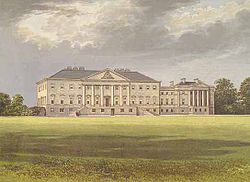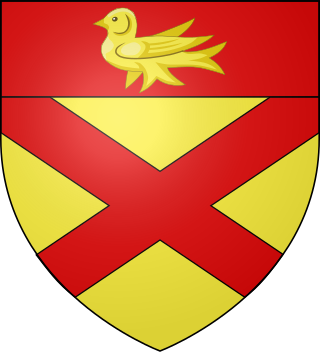
Baron Aberdare, of Duffryn in the County of Glamorgan, is a title in the Peerage of the United Kingdom. It was created on 23 August 1873 for the Liberal politician Henry Bruce. He served as Home Secretary from 1868 to 1873. His grandson, the third Baron, was a soldier, cricketer and tennis player and a member of the International Olympic Committee. His son, the fourth Baron, held office in the Conservative administration of Edward Heath and was later a Deputy Speaker of the House of Lords. Lord Aberdare was one of the ninety-two elected hereditary peers that were allowed to remain in the House of Lords after the passing of the House of Lords Act 1999. As of 2017 the title is held by his son, the fifth Baron, who succeeded in 2005 and was elected to the House of Lords in 2009.
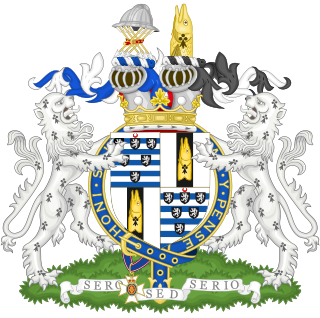
Marquess of Salisbury is a title in the Peerage of Great Britain. It was created in 1789 for the 7th Earl of Salisbury. Most of the holders of the title have been prominent in British political life over the last two centuries, particularly the 3rd Marquess, who served three times as Prime Minister in the late 19th and early 20th centuries.

Earl of Malmesbury is a title in the Peerage of Great Britain. It was created in 1800 for the diplomat James Harris, 1st Baron Malmesbury. The son of the grammarian and politician James Harris, he served as Ambassador to Spain, Prussia, Russia and France and also represented Christchurch in the House of Commons. Harris had been created Baron Malmesbury, of Malmesbury in the County of Wiltshire, in 1788. He was made Viscount FitzHarris, of Hurn Court in the County of Southampton, at the same time as he was given the earldom. The earldom and viscountcy were the last creations in the peerage of Great Britain, future titles being made in the peerage of the United Kingdom which took effect three days later.

Viscount Bledisloe, of Lydney in the County of Gloucestershire, is a title in the Peerage of the United Kingdom. It was created in 1935 for the Conservative politician Charles Bathurst, 1st Baron Bledisloe, upon his retirement as Governor-General of New Zealand. He had already been created Baron Bledisloe, of Lydney in the County of Gloucestershire, in 1918, also in the Peerage of the United Kingdom. Bathurst was the great-grandson and namesake of the early-19th-century politician Charles Bathurst. The latter was the son of Charles Bragge and Anne Bathurst, granddaughter of Sir Benjamin Bathurst, younger brother of Allen Bathurst, 1st Earl Bathurst. In 1804, Charles Bathurst assumed the surname of Bathurst in lieu of Bragge. The first Viscount's grandson, third Viscount, was one of the ninety elected hereditary peers that were allowed to remain in the House of Lords after the passing of the House of Lords Act 1999, and sat as a crossbencher until his death. He was also a member of the Lords Constitution Committee. As of 2017 the titles are held by his son, the fourth Viscount, who succeeded in 2009.
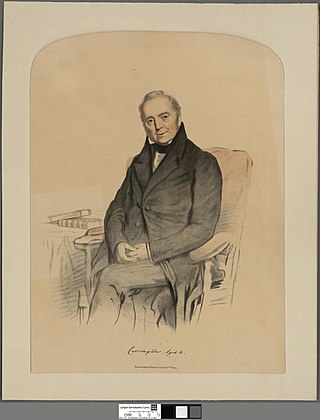
Baron Carrington is a title that has been created three times, once in the Peerage of England, once in the Peerage of Ireland and once in the Peerage of Great Britain.
Baron de Ramsey, of Ramsey Abbey in the County of Huntingdon, is a title in the Peerage of the United Kingdom. It was created in 1887 for Edward Fellowes, who had previously represented Huntingdonshire in the House of Commons as a Conservative for 43 years. His eldest son, the second Baron, sat as Member of Parliament for Huntingdonshire and Ramsey and later served as a Lord-in-waiting from 1890 to 1892 in the Conservative administration of Lord Salisbury. His grandson, the third Baron, was Lord Lieutenant of Huntingdonshire from 1947 to 1965 and of Huntingdon and Peterborough between 1965 and 1968. As of 2017 the title is held by the latter's son, the fourth Baron, who succeeded in 1993.
Baron Addington, of Addington in the County of Buckingham, is a title in the Peerage of the United Kingdom. It was created on 22 July 1887 for the businessman and Conservative Member of Parliament, John Hubbard. He was head of the firm of John Hubbard & Co and also sat as a Member of Parliament for Buckingham and the City of London. His eldest son, the second Baron, was a partner in the family firm and represented Buckingham in the House of Commons as a Conservative. He was succeeded by his eldest son, the third Baron. He was three times Mayor of Buckingham. On the death of his younger brother, the fourth Baron, the line of the eldest son of the first Baron failed. The title passed to their first cousin once removed, the fifth Baron. He was the grandson of Cecil John Hubbard, third son of the first Baron. As of 2018, the title is held by his eldest son, the sixth Baron. He is one of the ninety elected hereditary peers that remain in the House of Lords after the passing of the House of Lords Act of 1999. Lord Addington sits on the Liberal Democrat benches.

Baron Ashcombe, of Dorking in the County of Surrey and of Bodiam Castle in the County of Sussex, is a title in the Peerage of the United Kingdom. It was created in 1892 for the Conservative politician George Cubitt of Denbies House, Dorking, Surrey, who was continuously elected at elections over a 32-year period. He was the son of the architect Thomas Cubitt. Lord Ashcombe was succeeded by his son, the second Baron. He was a Conservative Member of Parliament and also served as Lord Lieutenant of Surrey. As of 2013, the title is held by his kinsman, the fifth Baron, who succeeded his first cousin, once removed in 2013.

Baron Amherst of Hackney, in the County of London, is a title in the Peerage of the United Kingdom. It was created on 26 August 1892 for the former Conservative Member of Parliament William Tyssen-Amherst, with remainder, in default of male issue, to his eldest daughter Mary and her issue male. Tyssen-Amherst had previously represented West Norfolk and South West Norfolk in the House of Commons. He was succeeded according to the special remainder by his daughter Mary. She was the wife of Colonel Lord William Cecil, third son of William Cecil, 3rd Marquess of Exeter. As of 2017 the title is held by their great-great-grandson, the fifth Baron, who succeeded his father in 2009. As a male-line descendant of the third Marquess of Exeter he is also in remainder to this peerage and its subsidiary titles the earldom of Exeter and barony of Burghley.
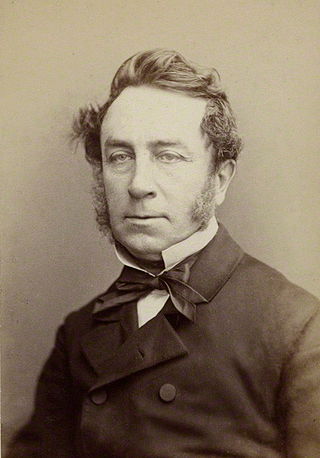
Baron O'Hagan, of Tullahogue in the County of Tyrone, is a title in the Peerage of the United Kingdom. It was created on 14 June 1870 for Sir Thomas O'Hagan, then Lord Chancellor of Ireland. His younger son, the third Baron, served as a Lord-in-waiting from 1907 to 1910 in the Liberal administrations of Sir Henry Campbell-Bannerman and H. H. Asquith and was later a Deputy Speaker of the House of Lords. In 1909 Lord O'Hagan assumed by Royal licence the additional surname of Towneley, which was that of his maternal grandfather. As of 2010 the title is held by his grandson, the fourth Baron, who succeeded in 1961. He is the son of the Hon. Thomas Anthony Edward Towneley Strachey. Lord O'Hagan was a Member of the European Parliament for Devon from 1973 to 1975 and again from 1979 to 1994, first as an independent and later as a Conservative. He assumed in 1938 by deed poll the additional Christian name of Towneley and the surname of Strachey in lieu of his patronymic. Strachey was the surname of his maternal grandfather Edward Strachey, 1st Baron Strachie.

Baron Northbourne, of Betteshanger in the County of Kent, is a title in the Peerage of the United Kingdom. It was created in 1884 for Sir Walter James, 2nd Baronet, who had earlier represented Kingston upon Hull in the House of Commons as a Conservative. His son, the second Baron, sat as a Liberal Member of Parliament for Gateshead. The latter's great-grandson, the fifth Baron, who succeeded his father in 1982, was one of the ninety elected hereditary peers that were allowed to remain in the House of Lords after the passing of the House of Lords Act 1999, and sat as a cross-bencher until his retirement in 2018. As of 2019, the titles are held by his son, the sixth baron, who succeeded his father in that year.
Baron Basing, of Basing Byflete and of Hoddington, both in the County of Southampton, is a title in the Peerage of the United Kingdom. It was created in 1887 for the Conservative politician and former President of the Local Government Board, George Sclater-Booth. On his death the title passed to his eldest son, the second Baron, and then to his son, the third Baron. On the latter's death in 1983 this line of the family failed. The title was inherited by the late Baron's first cousin, the fourth Baron. He was the son of Charles Lutle Sclater-Booth, second son of the first Baron. As of 2010 the title is held by the fourth Baron's grandson, the sixth Baron, who succeeded his father in 2007.

Baron Chesham, of Chesham in the County of Buckingham, is a title in the Peerage of the United Kingdom created in 1858 for the Hon. Charles Cavendish, who had earlier represented Aylesbury, Newtown, East Sussex, Youghal and Buckinghamshire in the House of Commons as a Liberal.
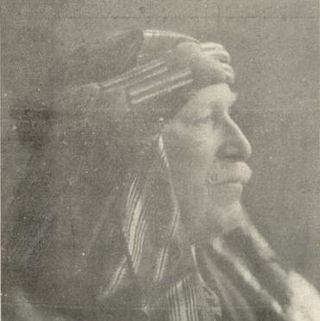
Lord Headley, Baron Allanson and Winn, of Aghadoe in the County of Kerry, was a title in the Peerage of Ireland. It was created in 1797 for Sir George Allanson-Winn, 1st Baronet, a former Baron of the Court of the Exchequer and Member of Parliament for Ripon. He had already been created a Baronet, of Little Warley in the County of Essex, in the Baronetage of Great Britain on 14 September 1776. His son, Charles Winn-Allanson, 2nd Baron Headley, represented Ripon, Malton and Ludgershall in Parliament. In 1833 he succeeded a distant relative as 8th Baronet, of Nostel. His nephew, the third Baron, sat in the House of Lords as an Irish Representative Peer from 1868 to 1877. His son, the fourth Baron, was an Irish Representative Peer from 1883 to 1913. His cousin, Rowland Allanson-Winn, 5th Baron Headley, was a prominent convert to Islam. On the death in 1994 of the latter's younger son, Charles Allanson-Winn, 7th Baron Headley, the titles became extinct.

Rowland Winn, 1st Baron St Oswald was an English industrialist and Conservative Party politician.
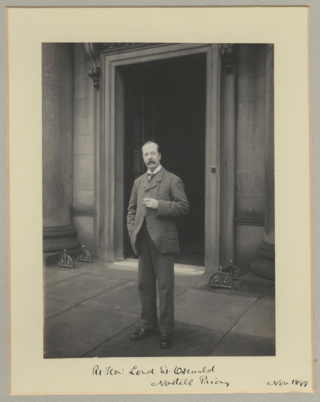
Rowland Winn, 2nd Baron St Oswald was a Conservative Party politician in England.

Edward Henry Trafalgar Digby, 10th Baron Digby, also 4th Baron Digby in the Peerage of Great Britain, was a British peer and Conservative Member of Parliament.
Rowland Denys Guy Winn, 4th Baron St Oswald,, was a British soldier and Conservative politician.
Olive, Lady Baillie was an Anglo-American heiress, landowner and hostess. She is best known as the owner of Leeds Castle, near Maidstone, Kent, England. On her death the castle was bequeathed to a charitable trust to enable it to be open to the public.
Baron Dunleath, of Ballywalter in the County of Down, is a title in the Peerage of the United Kingdom. It was created on 29 August 1892 for the businessman and former Conservative Member of Parliament for Downpatrick, John Mulholland. The Mulholland family were involved in the cotton and linen industry in Ulster in the north of Ireland. The first Baron's son, the second Baron, represented Londonderry North in the House of Commons as a Conservative. His grandson, the fourth Baron, was a member of the Northern Ireland Assembly for the Alliance Party. He was succeeded by his first cousin, the fifth Baron, who had already succeeded his father as second Baronet of Ballyscullion. As of 2017 the titles are held by the fifth Baron's son, the sixth Baron, who succeeded in 1997.

